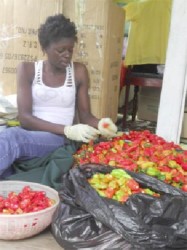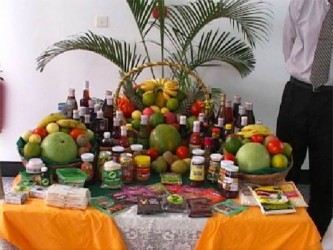For several years now the United Nations Food and Agricultural Organiza-tion (FAO) has been urging a more robust response by countries to what is widely believed to be an impending global food crisis. That call has attracted varying degrees of attention in the Caribbean region though much of what the experts say about regional attitudes to food security is hardly reassuring.
In some Caribbean Community (CARICOM) countries, Trinidad and Tobago being the standout territory in this regard, long-standing farming traditions have given way to a rise in the consumption of imported foods. In the case of Trinidad and Tobago, observers blame this development on the twin-island Republic’s oil wealth. In other instances, the proliferation of imported foods is associated with the pressures of a regional tourism sector that steers the culinary culture in the direction of catering to the tastes of the extra-regional visitors.
Agro-processing is the transforming of products originating from agriculture, forestry and fisheries into value-added products.

A large part of agricultural production undergoes some degree of transformation between harvesting and final use. The industries that use agricultural, fishery and forest products as raw materials comprise a very varied group. They range from simple preservation (such as sun drying) and operations closely related to harvesting to the production, by modern, capital-intensive methods, of such articles as textiles, pulp and paper.
The food industries are much more homogeneous and are easier to classify than the non-food industries since their products all have the same end use. Most preservation techniques, for example, are basically similar over a whole range of perishable food products, whether they be fruit, vegetables, milk, meat or fish. In fact, the processing of the more perishable food products is to a large extent for the purpose of preservation.
If farming continues to be very much an important pursuit in much of the region, the reality is that CARICOM’s food import bill currently runs at a reported US$5 billion annually, a luxury that the region can ill-afford. It is, many feel, time to push the food security panic button.
There has long been a feeling across the Caribbean that Guyana is the main driver behind what collective agricultural thrust might exist in the region. Self-sufficiency is no longer an issue here and given an economy which, these days, can depend on little more than gold and rice for export earnings, the prospects for marketing more of the country’s other food crops on foreign markets has begun to get some measure of attention.
There are, unquestionably, challenges here. The most formidable of these is a rising tide of non-tariff barriers, primarily health-related ones that restrict the export of foods to what are potentially the most lucrative markets in Europe and North America. The United States’ Food Safety Modernization Act (FSMA) signed into law by President Barack Obama in 2010 threatens to deal a crippling blow to food imports from countries like Guyana.

Guyana’s other key challenge as far as food exports is concerned is its strictly limited capacity to add any real value to agricultural products. Here, the limitations are multi-faceted. We lack, in some instances, the science associated with the sophisticated processing techniques as much as we lack the equipment and machinery to turn raw fruit and vegetables into manufactured products. Crucially, we lack the laboratory capacity to effectively test what we produce for external markets as required under the FSMA.
These limitations, however, have not affected a continually emerging enthusiasm for agro-processing in Guyana. In recent years, mostly micro and small enterprise, single investor initiatives have emerged across the country. For now, the majority of these operate at around subsistence level though larger ones, a few with even limited overseas markets have emerged. Amerindian communities, long steeped in low level agro-processing have demonstrated a capacity to produce marketable commodities but habitually fall at the hurdles of labelling, packaging, marketing and moving goods from the interior to distribution centres on the coast.
Head of the local Agro Processors Association Ram Prashad says that the growth of the agro-processing sector will take time and, equally importantly, will require the support of government. In the face

of the inability of small agro processors to afford machinery for processing Prashad has floated the idea of government creating an incubator, a facility that allows for small producers to access a factory that provides all of the various services associated with transforming fruit or vegetables into processed foods. “Essentially, they turn up with their raw material and access a service that includes packaging and labeling for which they pay a fee,” Prashad says.
In the meantime the local agro-processing sector soldiers on in its decidedly underdeveloped state but with evidence of an uplifting enthusiasm from the small operators in the sector. There is, too, evidence of an increasing awareness of the importance of raising standards. These days, much more effort is being put into packaging and labelling. IICA particularly, and the local FAO office have been helpful to the growth proceeds in the agro-processing sector.
For its part, government, through the Ministry of Agriculture has been supporting the promotion of the sector through the Guyana Marketing Corporation. (GMC). The GMC has been involved in initiatives designed to accelerate the public promotion of the sector through the permanent display and sale of agro-processed foods in its Guyana Shop.
Last month’s first ever major national agro-processing forum provided a unique opportunity for farmers, manufacturers, government officials and representatives of international organizations to meet and to contemplate the future of agro-processing. The discourses may have been inconclusive but the level of earnestness of the discourses point to an increasing level of interest in agro-processing as an employment-generating option as well as a means of better preparing Guyana for the challenge of food security.




